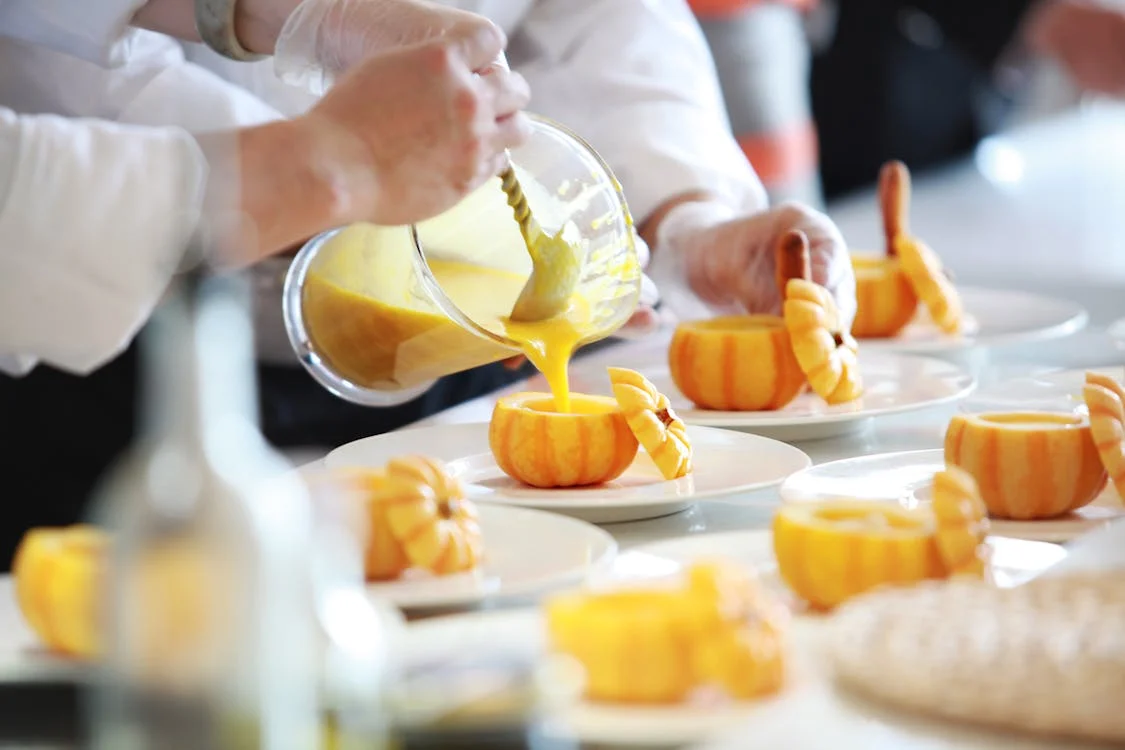Fine dining restaurants are expected to offer and deliver a higher level of customer service as compared to regular restaurants. Guests expect upscale table settings elegant ambiance and a menu with higher price points. Furthermore, they also expect the servers to uphold their fine dine etiquettes. Sometimes, even fine dining restaurants tend to overlook and confuse the basic steps of service, which makes them appear unprofessional and less appealing.
Therefore, if you are someone who owns a restaurant or is working as a server, you should practice and implement the order of steps of service in fine dining to give the customers exactly what they pay for. Let’s begin.
Types of Table Service
Before we proceed with discussing the order of steps of service in fine dining, we must talk about the types of table service. Take a look at some of the most popular types of table service below.
American
The American type of table service happens to be the most popular. Customers are provided menus from which they select the food. The list is then handed over to the kitchen staff, which prepares it before being served. Servers in that respect should use descriptive adjectives while explaining menu items to patrons and also possess extensive knowledge about the flavors mentioned in the menu.
Calling the manager every time a customer asks about a particular flavor will simply irritate the customer. Furthermore, successful servers are able to anticipate when to being the food items to the table before they are requested.
Family-Style
Another popular table service type is family style. Large platters are put on the table and the guests serve themselves bypassing food items to each other on the dinner table. This continues until everyone is satisfied and the stomachs are full. In this case, servers will be available right from the beginning till the end of the dinner to clean up the table.
French
The French table type service requires adequate space since food is prepared tableside for guests on a cart called “gueridon”. Furthermore, cooked foods such as beef wellington, steak or banana foster are prepared on a hot plate or “rechaud”.
Russian
This type of service is the most personalized as the food is garnished or carved on a cart beside a guest. However, unlike the French style, all food is prepared in the kitchen, decorated on platters, and then carried into the dining room.
Butler
Butler table type service is an exciting one. Also known as “flying service”, the food is presented on a tray by a server who is waiting and holds the items while the guests help themselves. Butler table type services are usually required at events or dinners where there are no sit-downs. At such events, the servers should make sure that the trays are not empty and stack them with food items whenever required.
Table Etiquettes
Setting the table
Fine dining restaurants require much more attention to detail other than just taking orders and delivering food. While the guests are enjoying their meals, servers are expected to clean up the next table, polish flatware, fold the napkins, and keep everything ready. Formal dinner settings may sometimes require and include upto 20 pieces of hardware for just one guest. With so many glasses, utensils, and plates, setting the items could become confusing. However, the general rule of thumb is that the flatware is set from the outside of the dinner plate to the inside as this follows the progression of a formal meal.
Furthermore, table settings are always arranged according to right-handed people. With that being said, in a clockwise direction, you will find wine and water glasses, spoons, knives, chargers, and dinner plates with napkins placed on top along with dinner forks, bread plates, and butter knife, while ending with a dessert spoon and dessert fork.
Depending on the menu, some additional pieces such as saucers and cups maybe required as well. In addition to that, glasses should be arranged in a square or diagonal pattern to the right of the dinner plate. These glasses comprise water, white wine, red wine, and a champagne flute for occasions that require a toast.
Lastly, while setting up the tables, it should be made sure that the distance between the tables remains consistent. You may use a ruler to measure the distance so that the tables are not too close to one another making the customers uncomfortable.
Serving the Table
When it comes to serving the table, most upscale dinners will feature five courses including an appetizer, soup, salad, entrée, and dessert. Moreover, many formal restaurants practice the open hand service method, which means that the arms of a server should not be crossed in front of a guest and the food is always to be served from the left side. Additionally, the plates should be rotated as well so that the proteins of a dish are facing the guest rather than the vegetables.
While serving wine, as a server make sure that you never hold the glass from its bowl rather the stem. The reason is that the wine will remain cooler if the heat from your hand is not warming it. Make sure that you use a napkin as well to clean any drips while pouring.
Clearing the table
When the customers are done or almost done with their meals in fine dining restaurants, there are some signs to gauge the table clearing process. In some cases, the napkins will be put on the table, and cutlery is often placed in a vertical position on top of a patron’s dinner plate. If incase the meal is not finished and the customer has left the table to attend a call or visit the washroom, a napkin is placed on the chair. According to the industry standards, plates should always be removed from the right of the guest. For meals that include multiple courses, empty plates, and glasses should be cleared before the arrival of the next course.
Basic Steps of Service
The basic steps of service fine dining are implemented as soon as a customer walks in. You might want to give them a few seconds to settle down before stepping in to say “Hello”. Make sure that you do not take too long to make contact with them. Ideally, you should greet your guests after 1 or a maximum of 2-minutes.
Then, greet the customer and ask whether they would like to have drinks before the meal. If they request a few additional minutes to settle down and decide, step back and wait. Once the drinks have been ordered, deliver them to the customer as soon as possible. Post-drinks inform the customers of any specials your restaurant is offering. This can be done while you are dropping off the drinks.
Once the customers have decided on the meals, take out your note pad and write down the orders. After writing everything down, repeat the order and go right away to ring in the order.
While delivering the food and putting the dishes on the table, name them as well. This way, if something was wrongly ordered, it could be taken away immediately.
And now that the customers are done with their main meals, start clearing the tables after making sure that everyone has finished. Let the customers digest a little and then offer coffee or desserts. If nothing is ordered, drop the bill. Unless someone specifically asks you to bring the bill, place the bill in the middle of the table. However, make sure that you do not make the table wait for the bill. Your amazing job of the day could go to waste if the last impression was an utter mess.
While the customers are leaving, thank, and request them to return. Furthermore, ask them for feedback as well so that it leaves an impression of a good restaurant trying to better the dining experience.
Final Word
Even though fine dining restaurants offer high-quality foods but oftentimes customers are left disappointed by the order of service. One-step overlooking the other will have serious consequences and chances are that you will lose a large number of customers in a relatively short amount of time. Therefore, if you are a restaurant owner that specializes in fine dining, consider the tips outlined above to provide an unmatched dining experience each time.

